Photos: The freakiest-looking fish
Red Lionfish
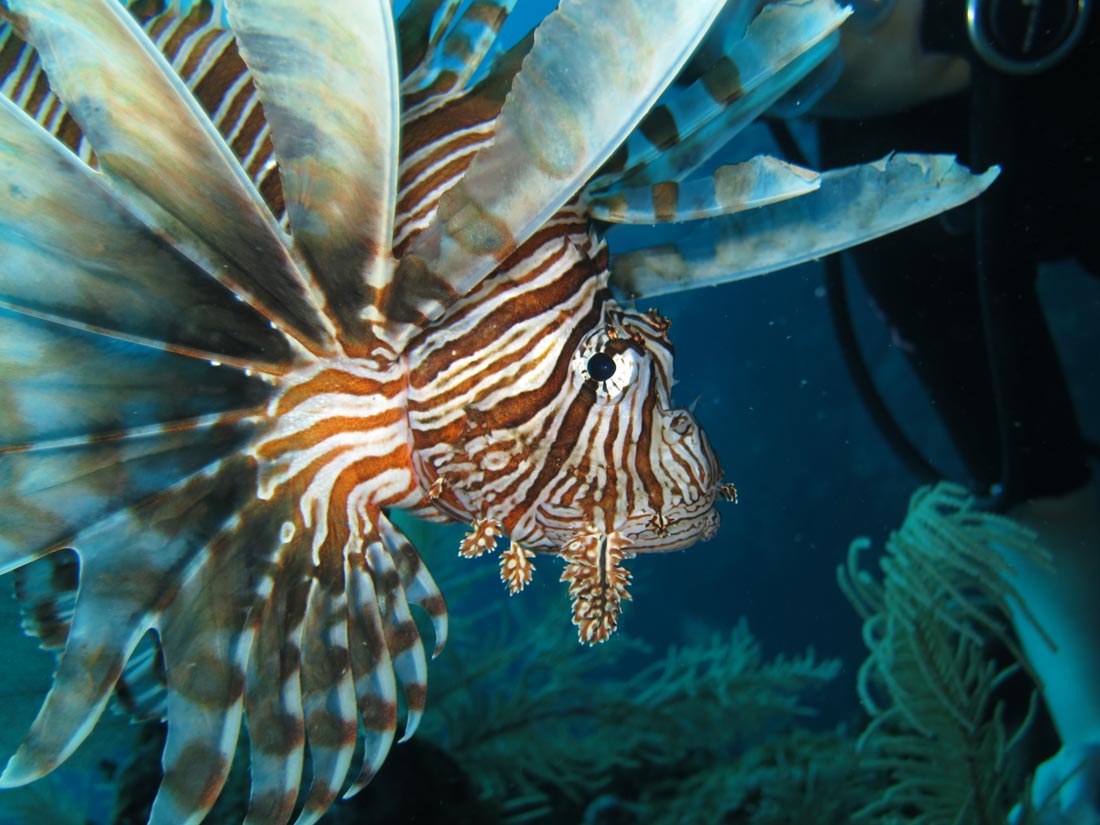
Look at that mug. With its striped coat and fanlike pectoral fins, the invasive lionfish is quite the looker. It's also invasive. Though native to the Indo-Pacific region, the lionfish has been eating its way through reefs of the Caribbean Sea and Atlantic Ocean, scientists are finding. With no effective predators, fishing by humans may be the only way to control the population, say scientists.
The lionfish is just the tip of the iceberg when it comes to bizarro fish. From a green-eyed creature with a snout that senses its prey's heartbeats to a bat-fish that appears to be wearing red lipstick to a scorpionfish that uses its ugly mug to hide amongst beds of seaweed.
Bat fish
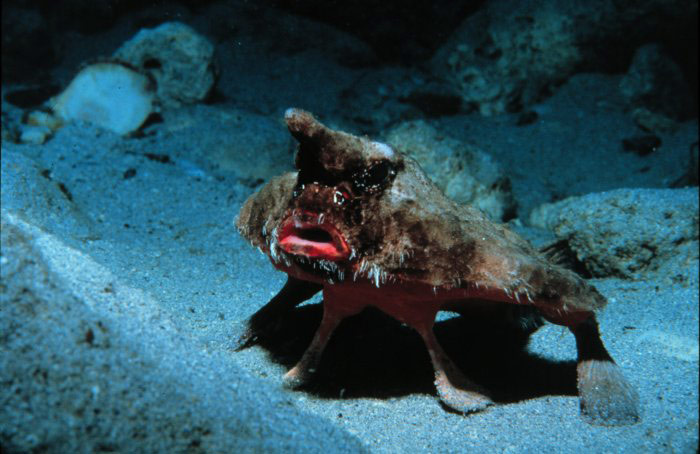
The batfish (Ogcocephalus darwini) is surely odd-looking with its red lips and its hornlike rostrum that juts out between the eyes. Growing to about 10 inches (25 centimeters), this fish is endemic to waters around the Galapagos Islands, according to the Encyclopedia of Life. Its pectoral and pelvic fins form appendages that look like limbs. When it comes to swimming, this oddball wouldn’t win any contests. Though it is capable of an awkward swim stroke, the red-lipped batfish typically walks on the seafloor with its fins, according to the Ashland Vertebrate Biology blog.
Ghost shark
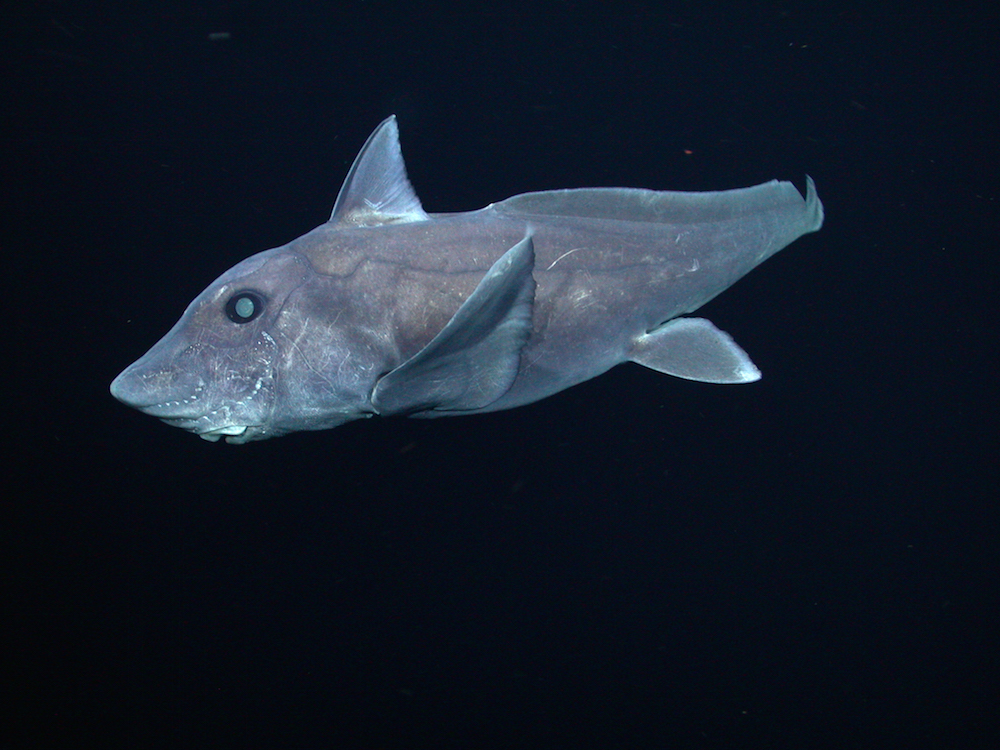
This creature's looks earned it the name ghost shark, but it's actually a fish that falls into the chimaera, or ratfish, group.
This species of ratfish is known as the pointy-nosed blue chimaera. It was videotaped by the Monterey Bay Aquarium Research Institute's remotely operated vehicle Tiburon near the summit of Davidson Seamount, off the coast of Central California at a depth of about 1 mile (1,640 meters).
Starburst of Color
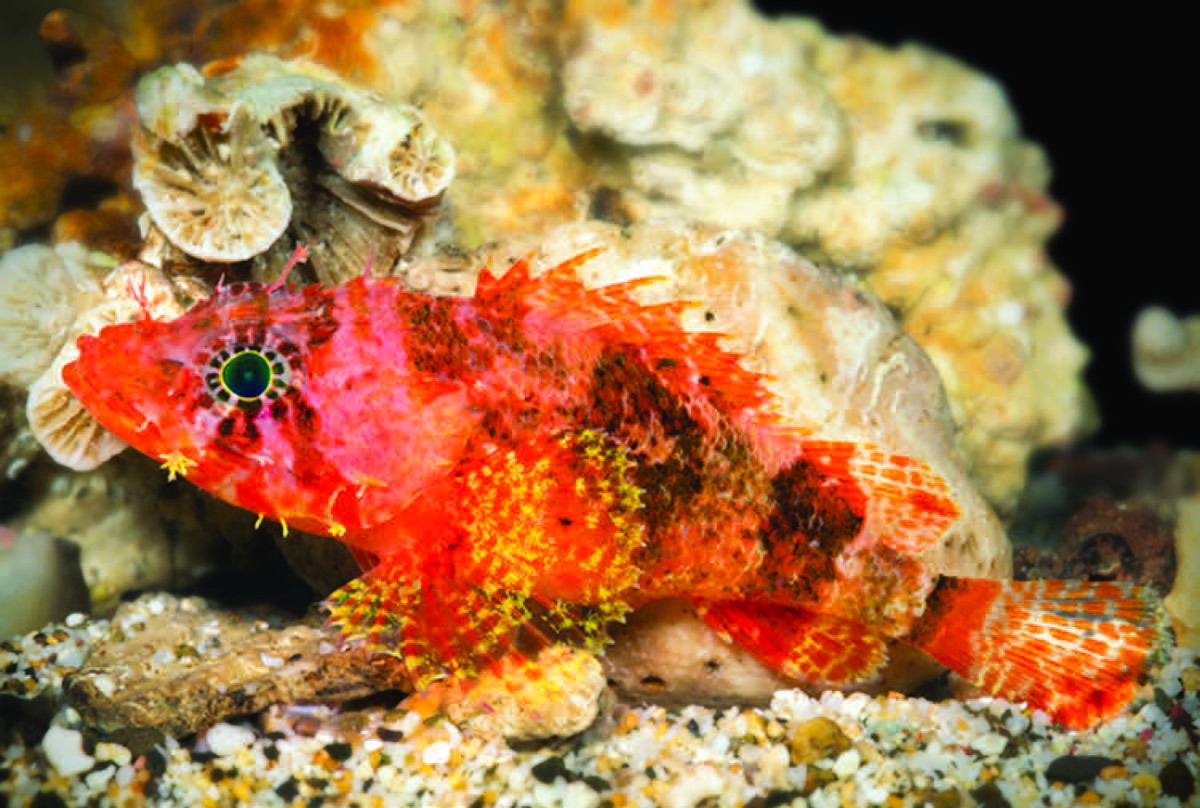
This species of scorpionfish, Scorpaenodes barrybrowni was discovered in the deep reefs of the Caribbean. Considered the deepest-living fish of its genus ever found, this scorpionfish is distinguished from its relatives by the elongated rays on its fins and by its starbursts of color. [Read full story on the scorpionfish discovery]
Scorpionfish
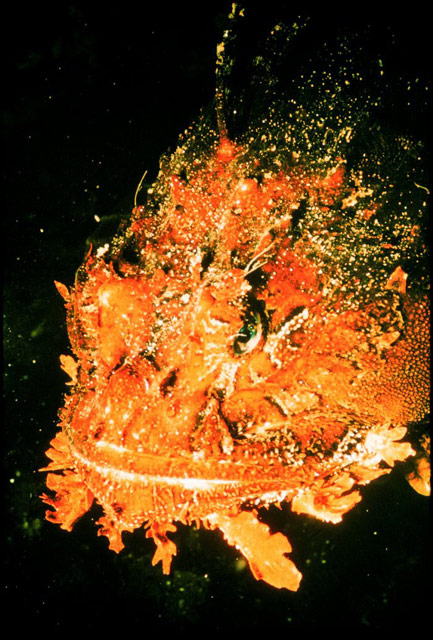
The Scorpionfish's fanciful mug allows it to hide in northern seaweed beds. Though it looks "decorative," the reef fish, Scorpaena plumieri, is equipped with venomous spines on its pectoral fins. The image was captured in the Atlantic Ocean off Massachusetts.
Knifenose chimaera
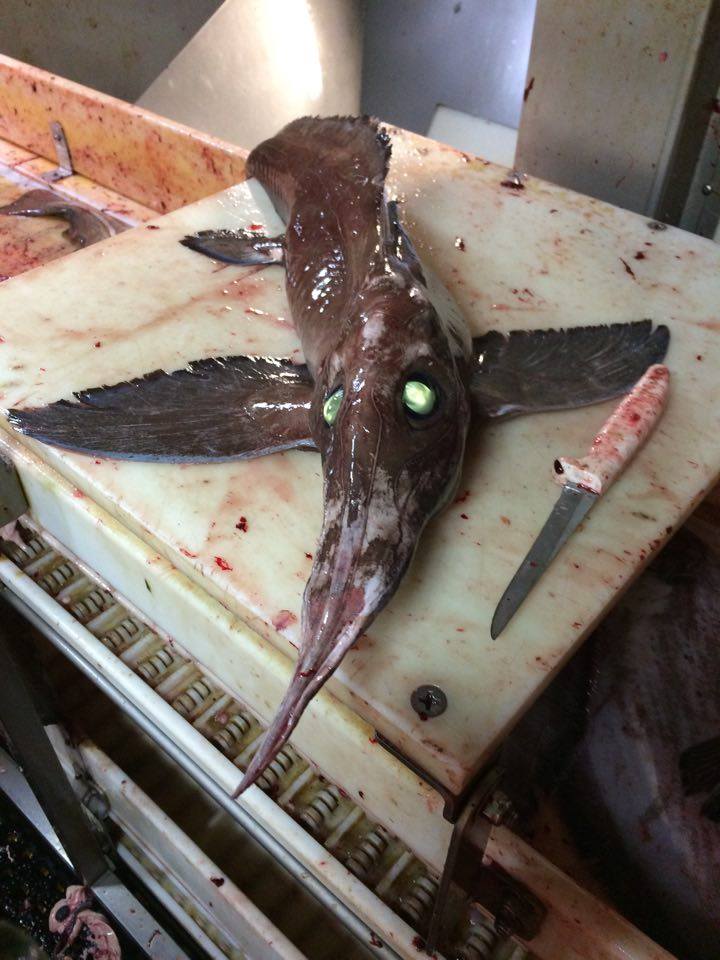
A fisherman discovered this weird fish in a pile of bycatch off the coast of Nova Scotia in eastern Canada on March 4, 2016. He snapped the photo, and later identified it as a knifenose chimaera (Harriotta raleighana), a deep-water fish that has a skeleton made of cartilage. (H. raleighana( is related to sharks, skates and stingrays, and usually swims near the ocean's floor, looking for prey with the heartbeat-sensing electroreceptors on its snout. [Read more about this odd-looking fish]
Sign up for the Live Science daily newsletter now
Get the world’s most fascinating discoveries delivered straight to your inbox.
Winglike fins
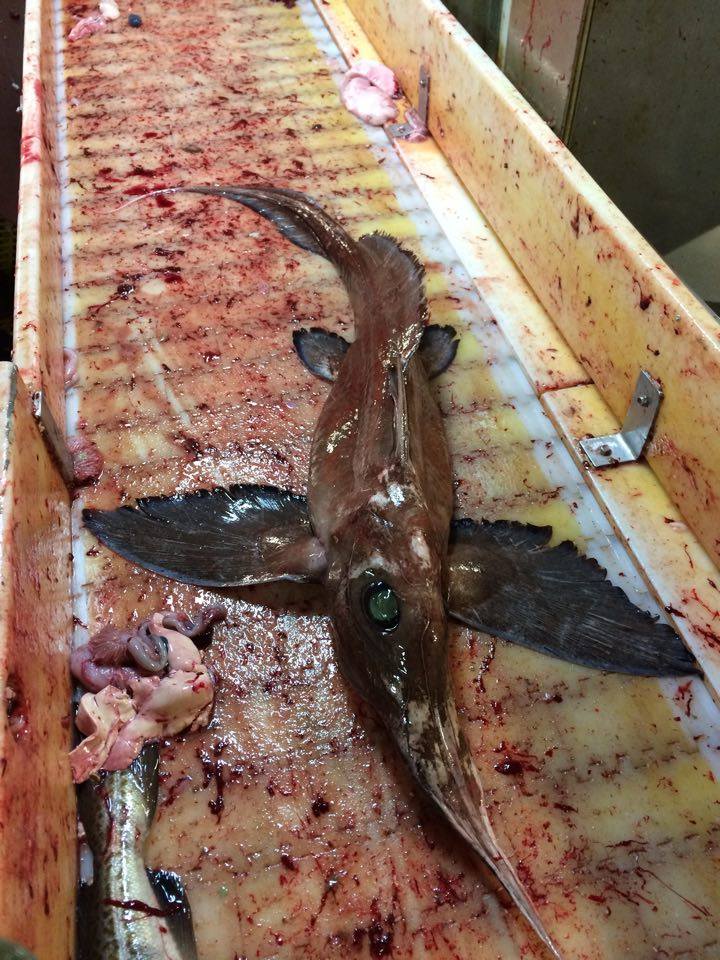
The knifenose chimaera propels itself forward by turning its winglike fins in a figure 8 motion. These fish are rarely seen by people because they live so deep in the ocean, usually from 0.2 miles to 1.6 miles (380 to 2,600 meters) under the water’s surface, But they're more and more frequently getting caught up in bycatch, experts report.
Green Speckles
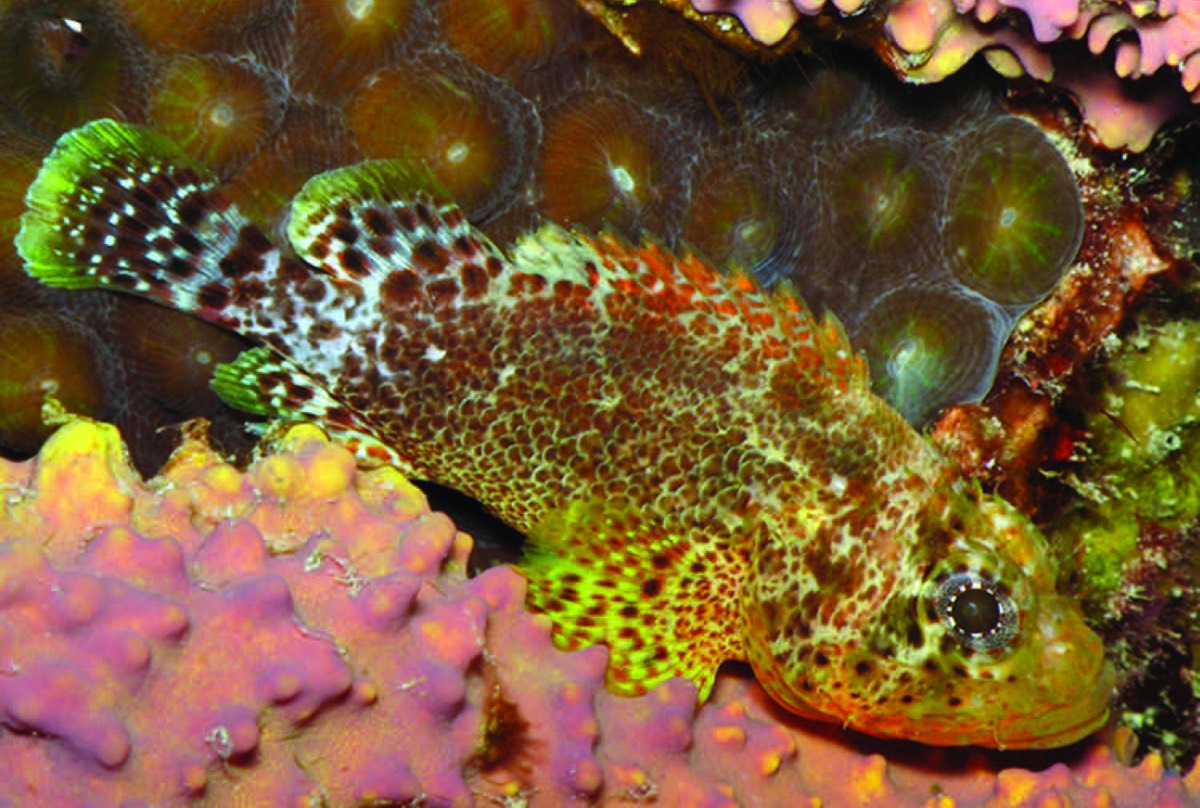
The green-speckled Scorpaenodes caribbaeus is a relative of the stellate scorpionfish (S. barrybrowni). Though small at just a few inches long, this scorpionfish makes up for size with its impressively patterned skin. The freaky fish lives in the western Atlantic Ocean.
California sheephead
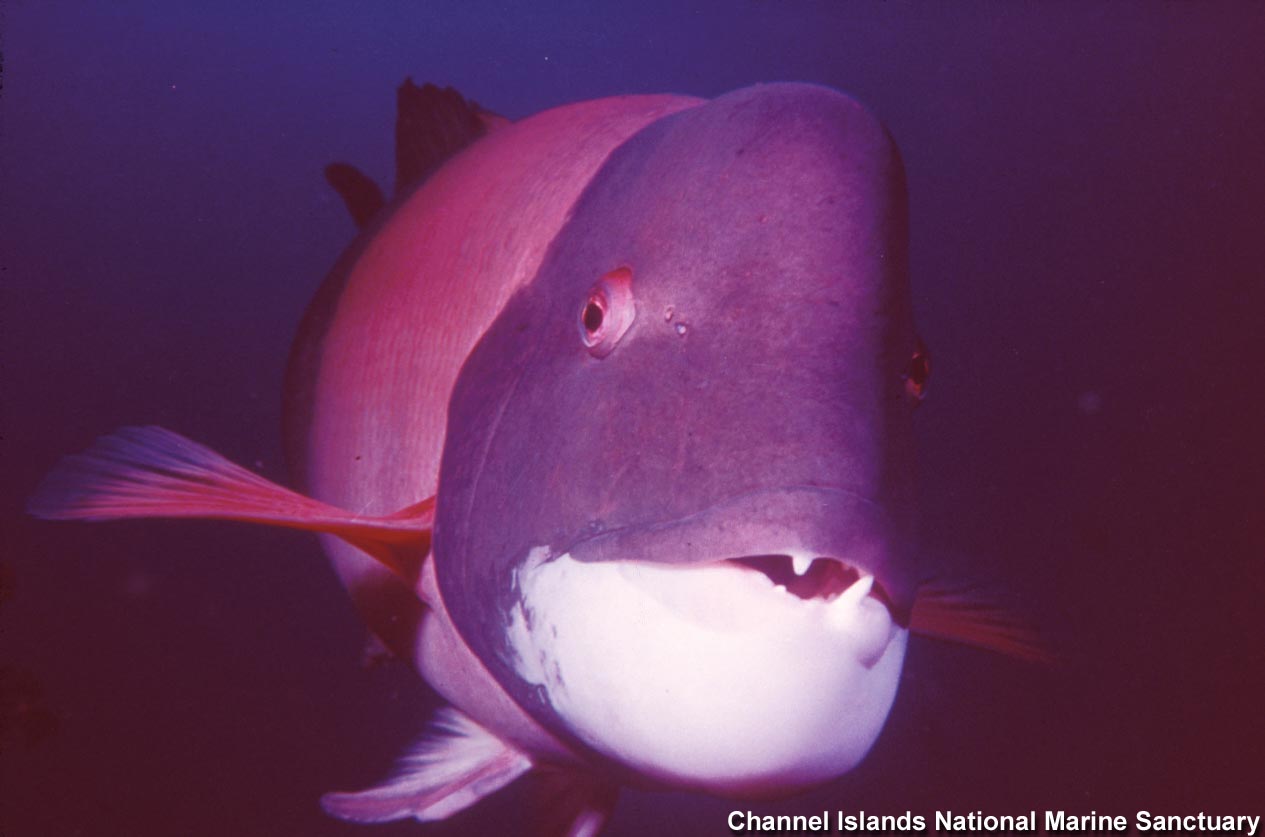
You might find a California sheephead (Semicossyphus pulcher) like this one roaming the rocky reefs and kelp forests that line the shore from the Channel Islands to Monterey. Amazingly, sheephead are all born females! It is only later in life that all of the fish will go through a change that transforms them into males.
lancetfish
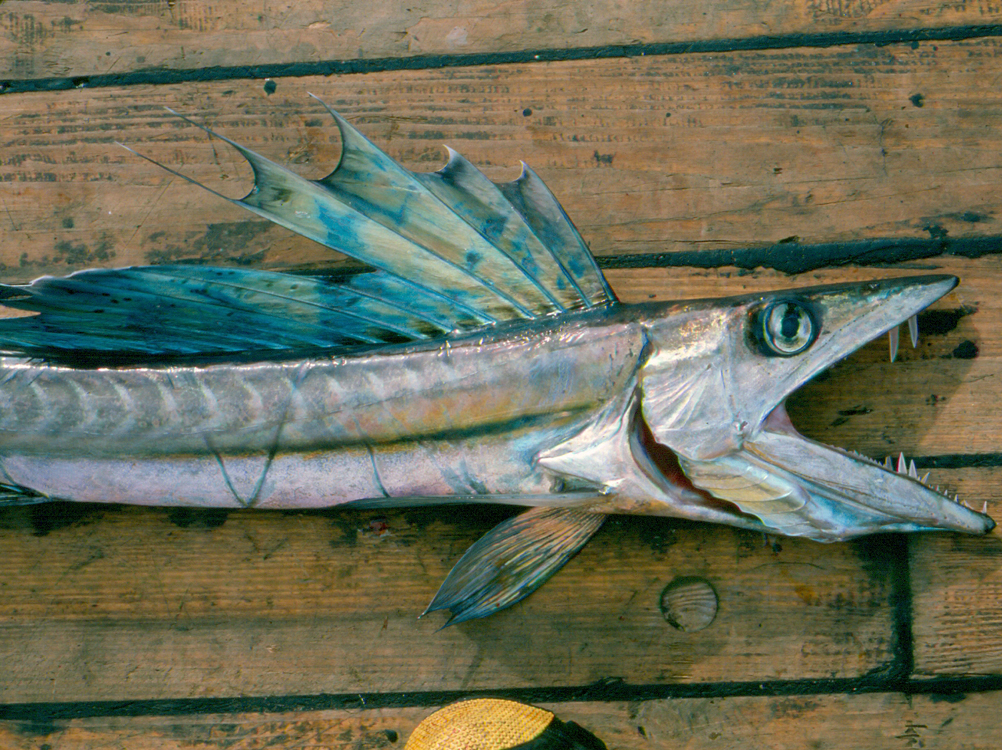
Talk about freaky looking! This long-snouted lancetfish (Alepisaurus ferox), a nocturnal predator that's rarely seen near shore, is known not only by its large fangs and tall dorsal fin, but also by its habit of eating others of its own species.
Because it's a relatively uncommon fish that inhabits the open ocean, little is known about its life cycle. In adolescence, lancetfish are hermaphrodites (having both male and female sex organs), though there's no evidence of adult hermaphrodites.
The cannibal fish can grow to be as long as 6.5 feet (2 meters) in length. Lancetfish generally feed at night, and in addition to dining on other lancetfish, they also eat crustaceans, squid and smaller species of fish.
Lionfish
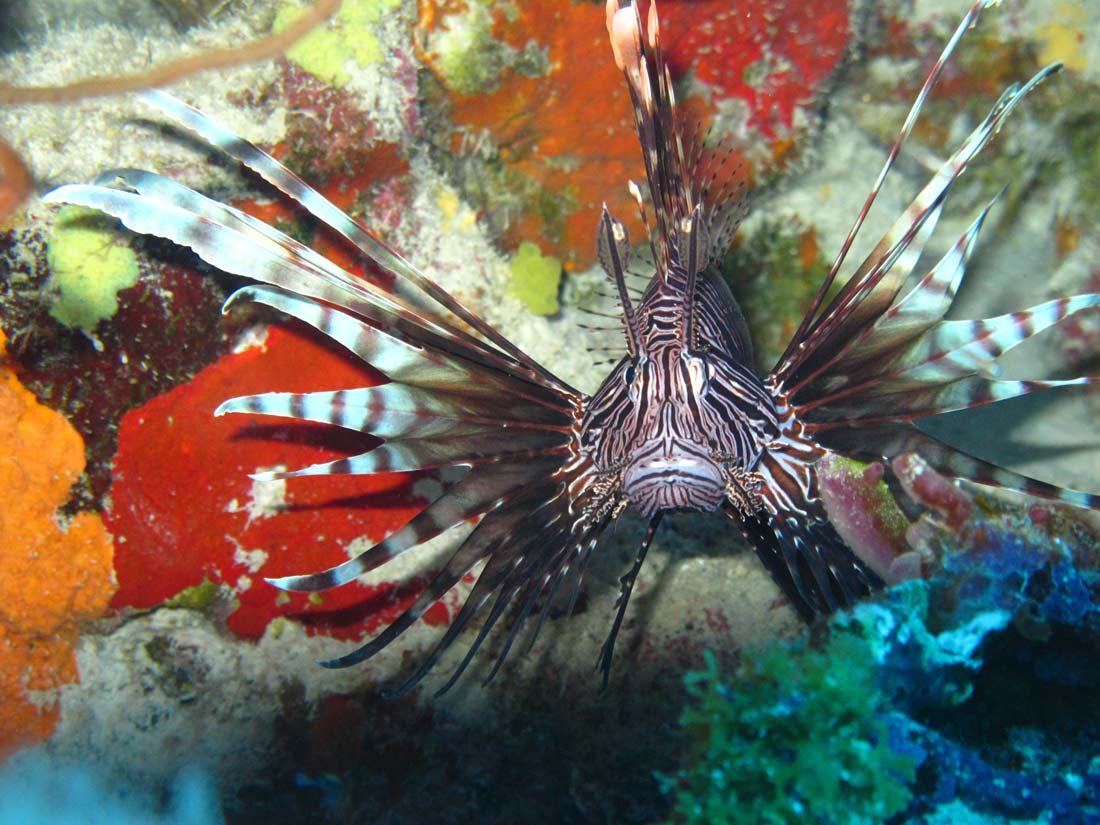
Lionfish, which generally grow to between 12 and 15 inches (30 to 38 centimeters) long, sport venomous spines on their bodies.
Parrotfish
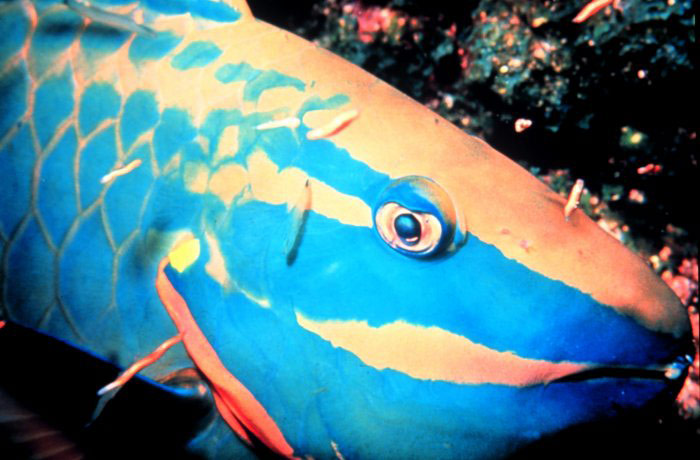
Here is a close-up of the brightly colored parrotfish supermale.
giant goldfish 2

Gigantic goldfish, like this one held by University of Nevada, Reno, researcher Christine Ngai, have been found in the waters of Lake Tahoe.
giant goldfish 1
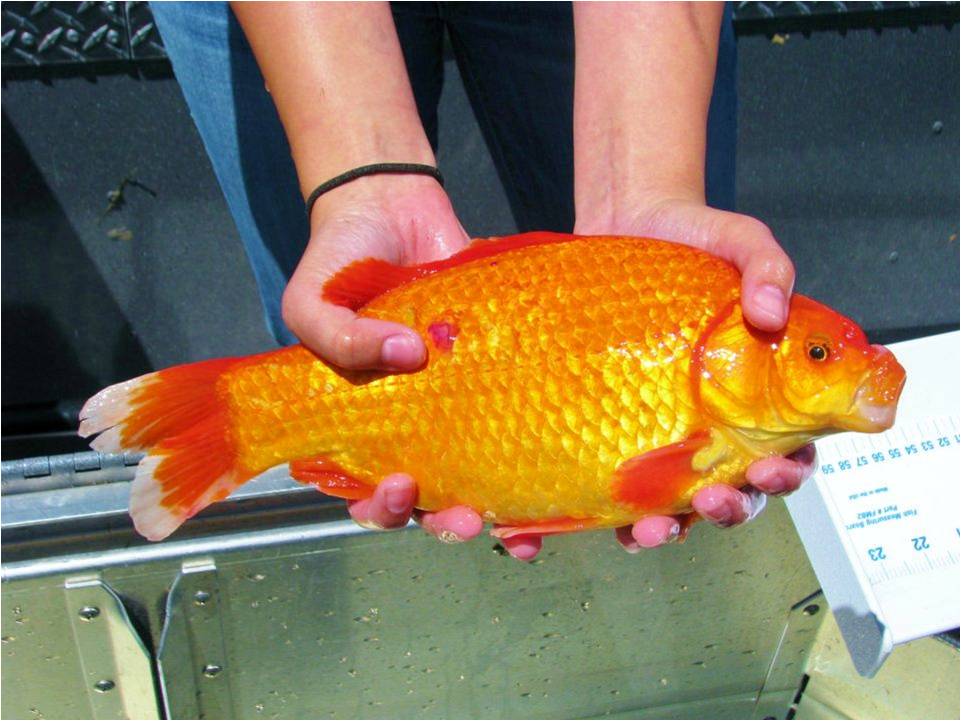
One of the giant goldfish found in Lake Tahoe.
Ocean sunfish
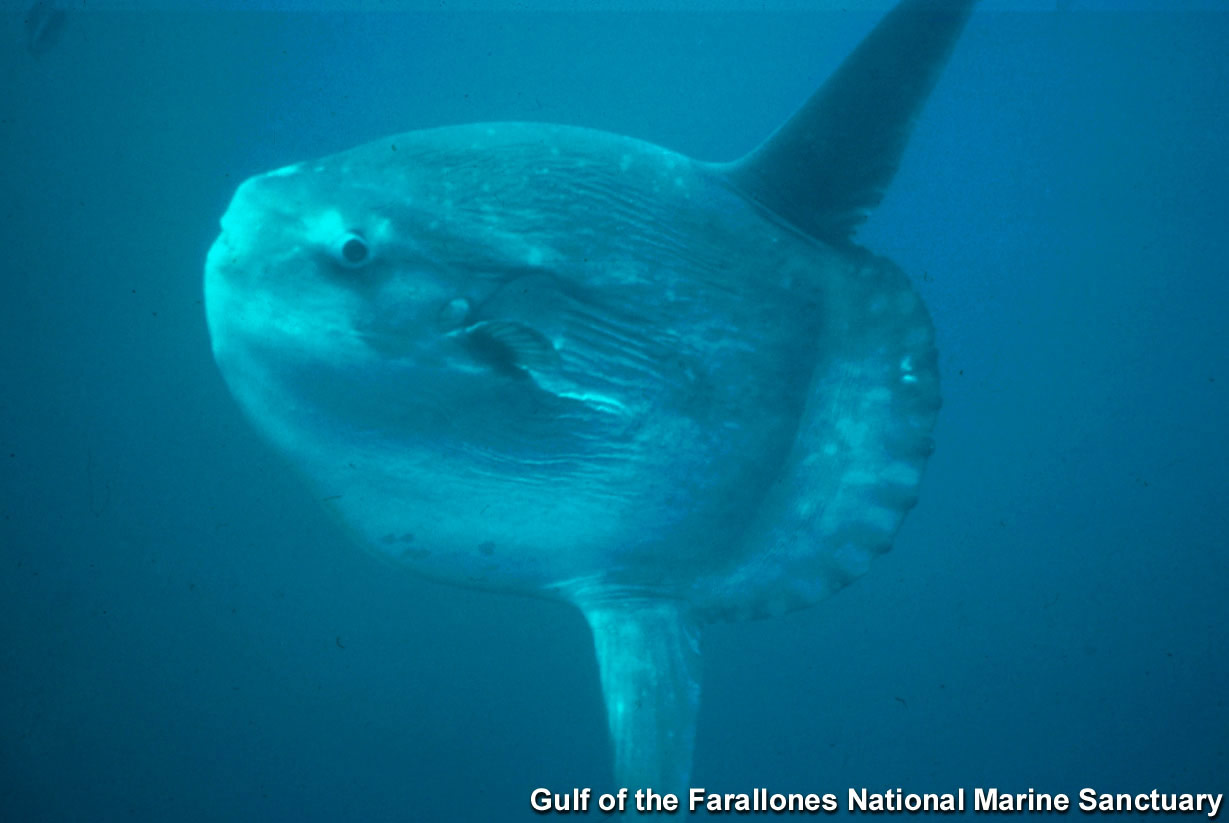
A giant ocean sunfish, or mola mola, cruises slowly through the water column. At the surface these unusual-looking fish will sometimes be mistaken for a shark because of their tall dorsal fins.
Scrawled filefish
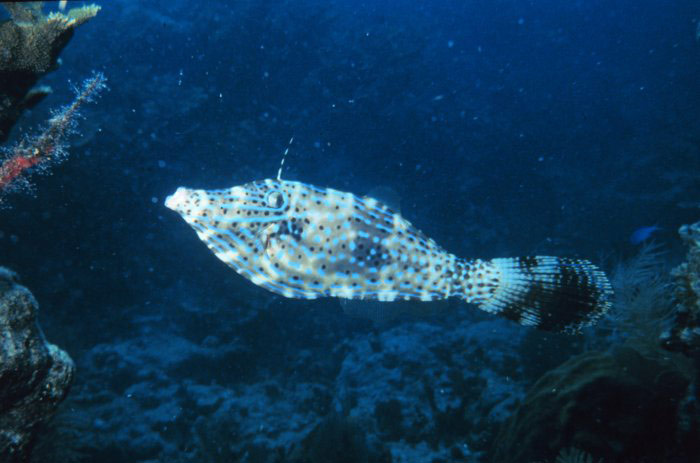
A scrawled filefish swims through the ocean waters.
Manta ray
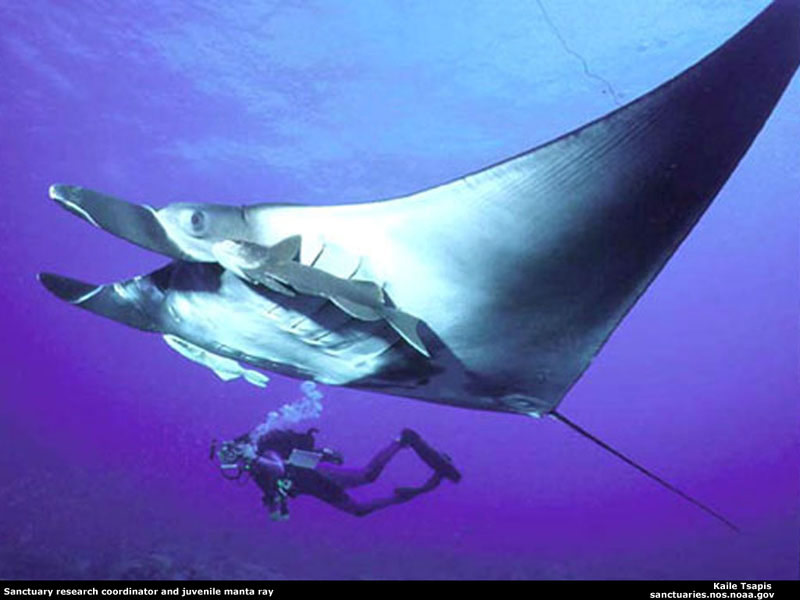
The picture shows a Manta ray swimming alongside a diver.
Torpedo ray
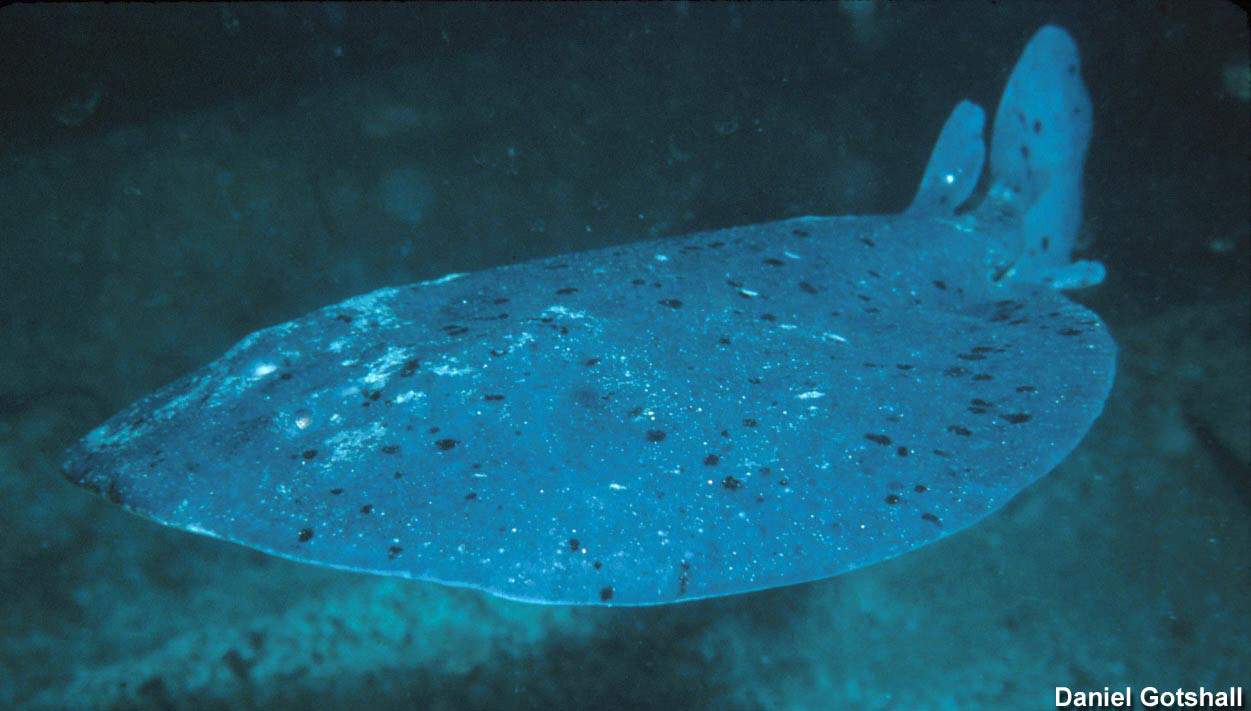
Torpedo rays (Torpedo californica) are identifiable by their flat gray bodies and black spots. Interestingly, these animals catch their prey by stunning them with a jolt!
Moray eel
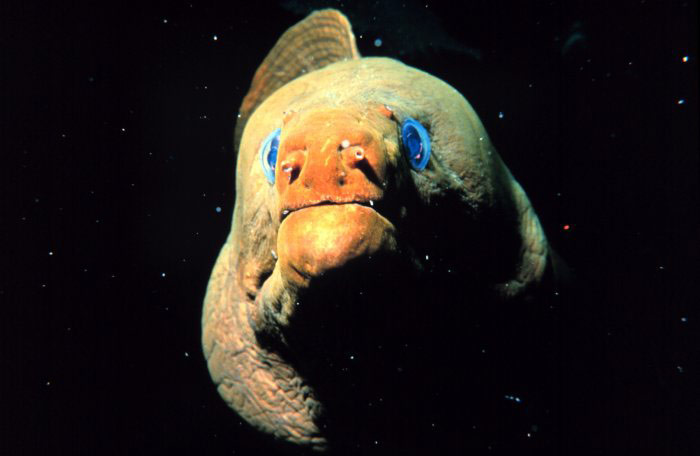
A ‘head-on view’ photograph of a green moray eel.
Goosefish
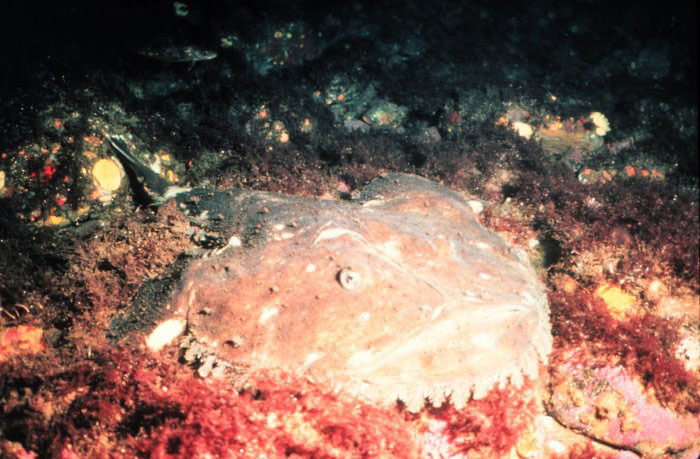
Shown above is a photograph of a Goosefish laying camouflaged on a northern rocky reef.
Bat rays
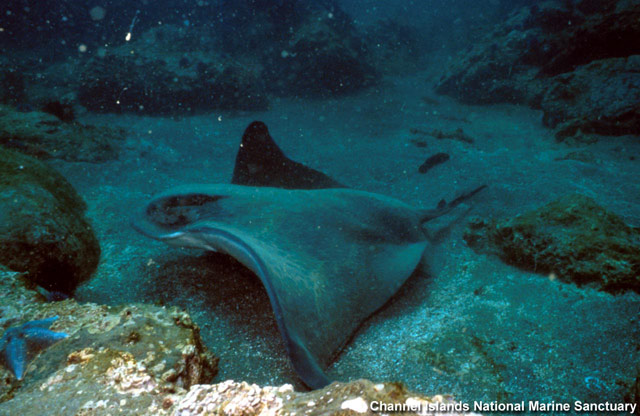
Bat rays (Myliobatis californica) like this one are truly graceful creatures who are normally 4 to 5 feet across but have been reported with "wingspans" of 8 feet. They live up to 24 years and are armed with a defensive barb on the end of their tail. Female bat rays grow larger, are faster, and live longer than males.
Queen angelfish
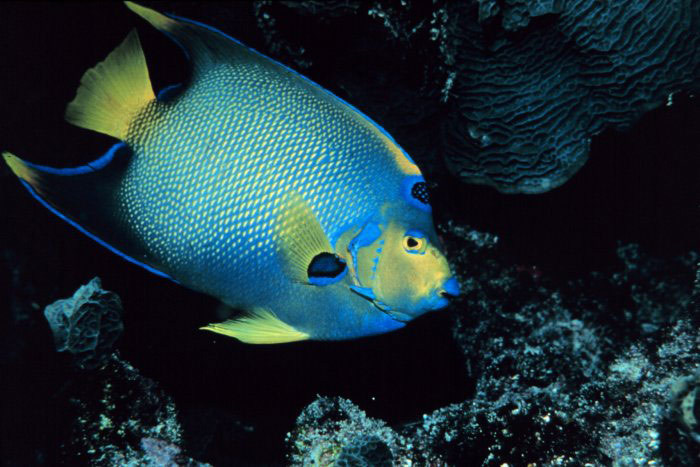
Queen angelfish is shown swimming near a reef.
Butterfly fish
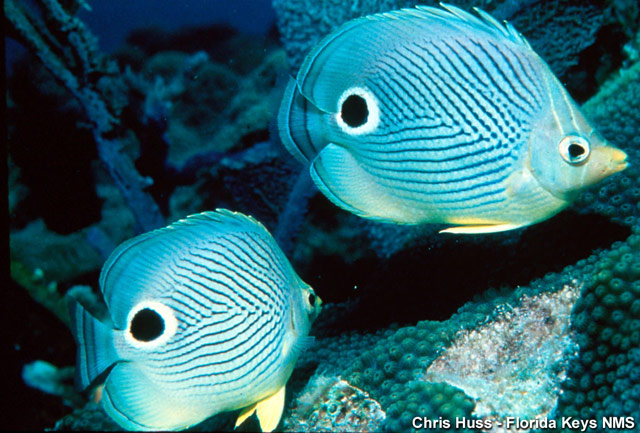
The four-eye butterfly fish (Chaetodon capistratus) is one of hundreds of fish species which inhabit the reef environment of the Florida Keys. The butterfly fish mates for life and therefore you will often see two of them. If you can imagine two butterfly fish nose to nose, they look like a butterfly. It is easy to see how they got their name.
Scrawled cowfish
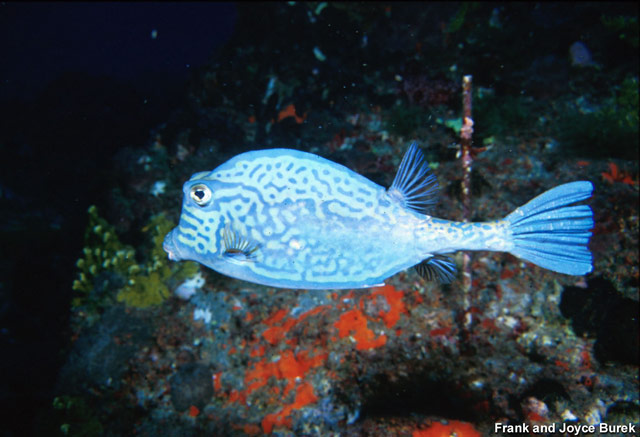
Scrawled cowfish (Lactophrys quadricornis) - a member of the boxfish family.
Wolf-eels

Wolf-eels, Anarrhichthys ocellatus, have powerful jaws for crushing bivalves.
Smooth trunk fish
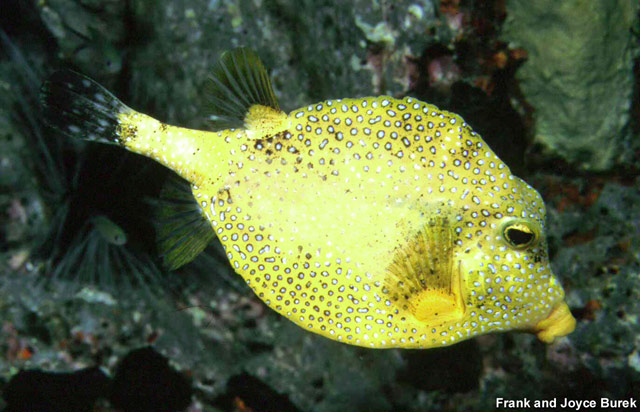
The smooth trunk fish (Lactophrys triqueter) is usually black and white in color, but at the Flower Gardens, Texas A&M University fish biologist, Dr. Christy Pattengill-Semmens, has documented the discovery of this unusual color morph of the fish - now called the golden-phase smooth trunk fish. A specimen of the fish was collected to verify that in fact it was not a new species. It has only been reported at the Flower Garden and Stetson Banks.
Leopard toadfish
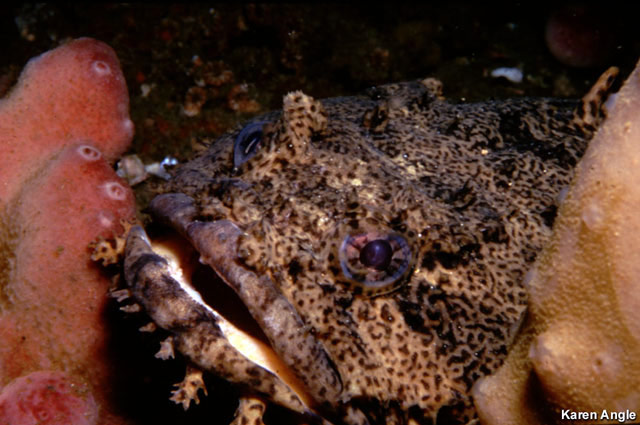
The leopard toadfish (Opsanus pardus) has a large, flat head and a large mouth with fleshy projections around it. They spend most of their time under a rock or crevice and feed mostly on mollusks and crustaceans.
Lingcod
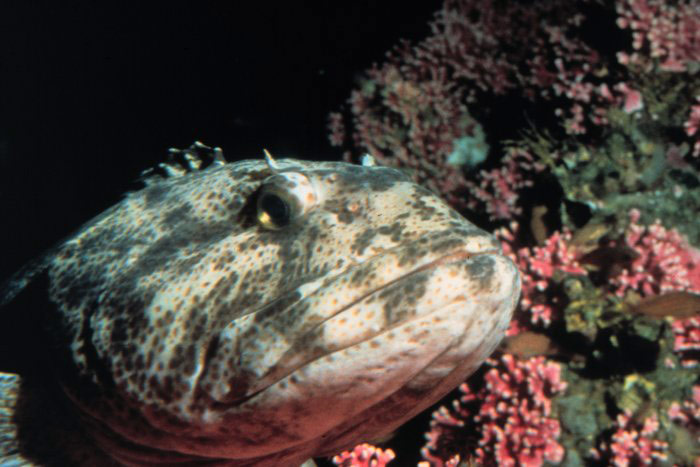
Lingcod, Ophiodon elongates, a rare fish found on the west coast of North America, are an important commercial and recreational fish species.
Codfish
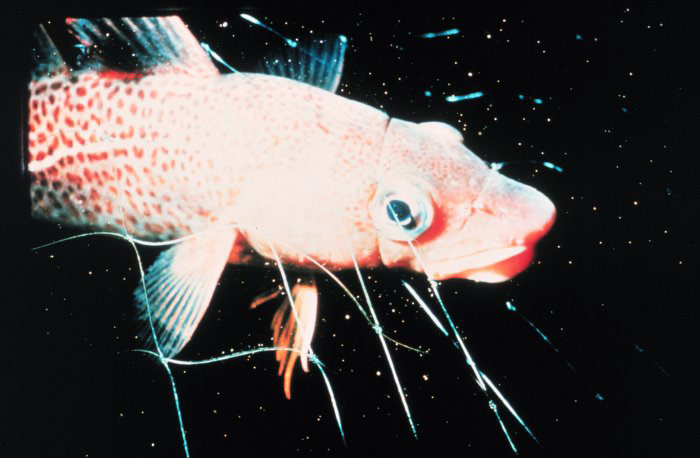
Juvenile codfish caught in a gill net.
Jackknife fish
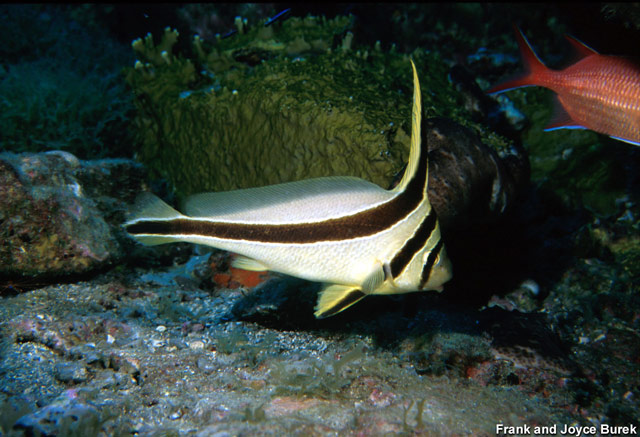
Jackknife fish (Equetus lanceolatus) are not commonly seen in the ocean. As juveniles, they are often misidentified as spotted drum - the drum has a spot on its' nose rather than the vertical stripe on the jackknife fish.









